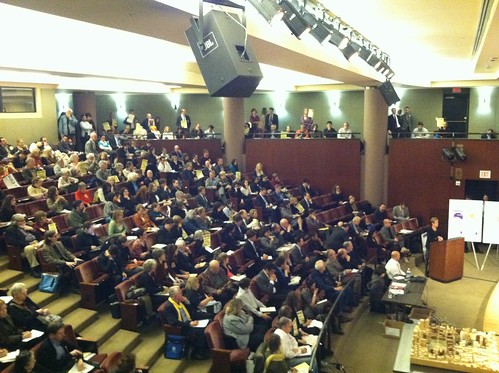 Jenn Pelly The East Village.
Jenn Pelly The East Village.For much of the past year, The New York Times and the Arthur L. Carter Journalism Institute at New York University have been working to bring you — our neighbors in the East Village — this experiment in journalistic collaboration.
As we launch The Local today, know that what you are seeing is not the culmination of that work, but rather the beginning of it. And so we start with our most important task, extending an open invitation to everyone in our community to participate in our site, which is designed to provide news, offer a forum for perspectives and opinion and promote a neighborhood-wide conversation about the issues that mean the most to us in this community.
You’ll see posts about some of those issues today — stories about culture and politics, the voices of established neighborhood institutions and those that are emerging — that will give you some idea of what we’re about as a site.
We’ll talk more about the The Local’s mission later today, but first I’d like to introduce you to some of the people behind the site and invite you to engage with us all.
I’m Rich Jones, the editor, and a former reporter at The New York Times who is now a visiting professor at NYU. I consider myself a storyteller in the tradition that puts the focus on the story and not the teller. So in the days and weeks ahead, my voice will recede from the site and be replaced by all of you telling your own stories about our community.
Some of you have already met Kim Davis, our community editor, who is an important liaison between the site and our neighbors.
Mary Ann Giordano, a deputy metro editor at The Times, is a coordinator of The Local blogs under whose guidance we will produce the site. Jim Schachter, an associate managing editor at The Times, will also play a key oversight role.
At NYU, the project has been led by Brooke Kroeger, the director of the Carter Institute, and Jay Rosen, whose students and faculty colleagues in the Studio 20 concentration, especially Jason Samuels, have played a crucial research and development role in laying the foundation for the site.
Many of the posts will be contributed by the students in the Hyperlocal News class, which is led by Yvonne Latty, Mary Quigley and Darragh Worland, and recognition should be given to the support provided by the larger community at NYU, including students, professors and administrators in journalism, at the Stern School of Business, at the Interactive Telecommunications Program at the Tisch School of the Arts, as well as from our deans of the Faculty of Arts and Science, Jess Benhabib and Dalton Conley. The project has also benefitted from the good offices of NYU Provost David McLaughlin and President John Sexton.
And, of course, I must acknowledge the most significant ingredient in our collaboration — you. Ours is one of the most distinct neighborhoods in New York — full of color and energy, heart-wrenching sadness and unexpected humor and uncommon grace. In other words, it is a wonderful place for us to tell stories.
Let’s all get to work.











